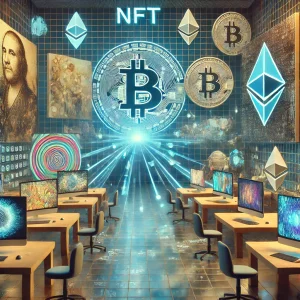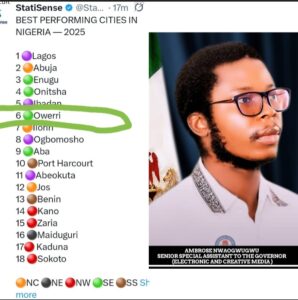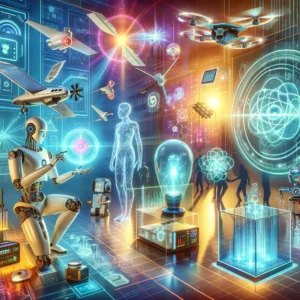Exploring the World of NFTs: A Beginner’s Guide

Exploring the World of NFTs: A Beginner’s Guide.
Learn all about NFTs in this beginner’s guide. Discover how they work, their applications, and how to buy and sell them in this booming digital market.
Non-fungible tokens (NFTs) have taken the digital world by storm, revolutionizing how we think about ownership, art, and technology. Whether it’s a digital artwork selling for millions or unique collectibles tied to blockchain technology, NFTs are transforming industries. This beginner’s guide will walk you through the basics of NFTs, their applications, and how to get started in this exciting field.
—
What Are NFTs?
NFTs, or Non-Fungible Tokens, are unique digital assets stored on blockchain technology. Unlike cryptocurrencies like Bitcoin or Ethereum, which are interchangeable (fungible), NFTs represent one-of-a-kind items that cannot be duplicated. Each NFT contains metadata that proves its authenticity and ownership.
Key Features of NFTs:
1. Uniqueness: Each NFT is distinct, making it a digital collectible.
2. Ownership: Blockchain technology ensures that ownership of an NFT is transparent and verifiable.
3. Indivisibility: Most NFTs cannot be divided into smaller units, unlike cryptocurrencies.
READ ALSO: The Ethical Challenges of Artificial Intelligence Development.
—
How Do NFTs Work?
NFTs are created through a process called minting, which involves uploading digital content (art, music, videos) to a blockchain. Popular blockchains for NFTs include:
Ethereum: The most widely used blockchain for NFTs.
Polygon: A cost-effective alternative with lower gas fees.
Tezos and Solana: Emerging platforms for NFT creators.
Once minted, NFTs are stored on the blockchain, with metadata linking to the digital asset, its owner, and transaction history.
—
Applications of NFTs
NFTs have expanded far beyond digital art, influencing various industries:
1. Digital Art
Artists can sell their works directly to collectors, bypassing traditional galleries. Each sale is tracked, ensuring creators earn royalties for secondary sales.
2. Gaming
NFTs are used to represent in-game assets like weapons, skins, or virtual land. Players own these assets and can trade or sell them in secondary markets.
3. Music and Entertainment
Musicians use NFTs to sell albums, concert tickets, or exclusive experiences directly to fans.
4. Virtual Real Estate
Platforms like Decentraland and The Sandbox allow users to buy, sell, and develop virtual land parcels.
5. Collectibles
Digital collectibles, like NBA Top Shot moments or CryptoPunks, have become highly sought-after.
6. Identity and Authentication
NFTs are being used for digital identity verification, ensuring secure access to online services.
—
How to Buy and Sell NFTs
1. Set Up a Wallet
Create a digital wallet like MetaMask or Trust Wallet to store your cryptocurrency and NFTs.
2. Choose a Marketplace
Popular NFT marketplaces include:
OpenSea: The largest NFT marketplace.
Rarible: A community-owned platform.
Foundation: Exclusive for digital artists.
3. Buy Cryptocurrency
Purchase cryptocurrency like Ethereum (ETH) to fund your transactions.
4. Browse and Purchase
Browse NFTs on your chosen marketplace. Once you find an item, use your wallet to complete the purchase.
5. Selling an NFT
Mint your digital content as an NFT and list it for sale on a marketplace, setting your price in cryptocurrency.
—
Risks and Challenges
Despite their popularity, NFTs come with risks:
1. Environmental Concerns: Blockchain transactions consume significant energy.
2. Market Volatility: NFT values can fluctuate drastically.
3. Fraud: Scammers may sell fake NFTs, making it crucial to verify authenticity.
4. Technical Barriers: Understanding blockchain technology can be challenging for beginners.
—
Benefits of NFTs
For creators and collectors alike, NFTs offer numerous advantages:
Transparency: Blockchain ensures every transaction is traceable.
Monetization: Creators earn royalties for future sales.
Global Access: Buyers and sellers connect worldwide without intermediaries.
—
The Future of NFTs
As technology evolves, NFTs are expected to play a significant role in:
1. Decentralized Finance (DeFi): Integrating NFTs into financial products like loans and insurance.
2. Metaverse Integration: Enhancing virtual experiences with unique assets.
3. Real-World Applications: NFTs for real estate, legal documents, and certifications.
—
Conclusion
NFTs are more than a digital trend—they’re a transformative technology reshaping how we perceive value and ownership. By understanding their fundamentals and applications, you can confidently explore the world of NFTs, whether as a creator, collector, or investor.





